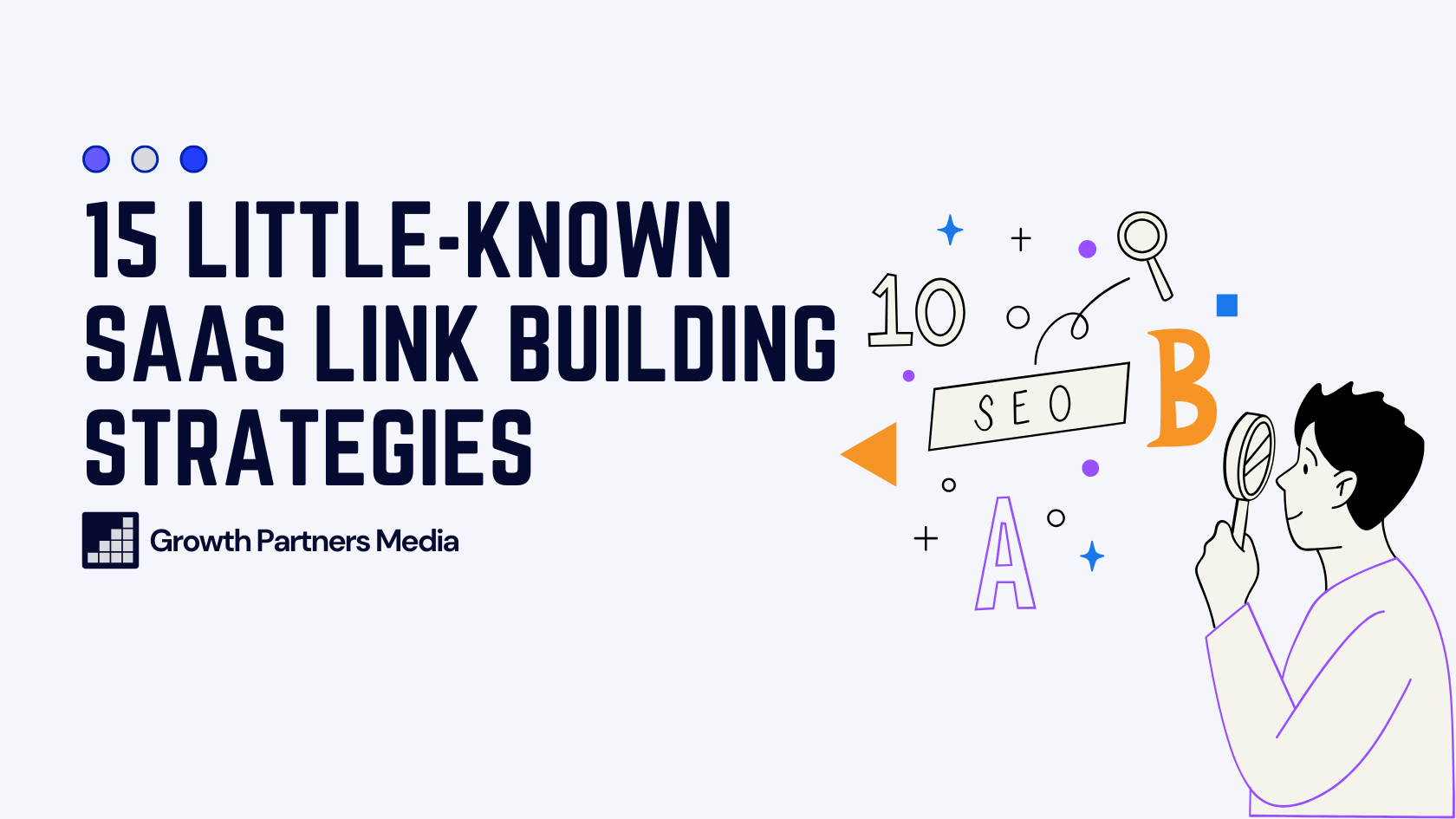Struggling with link building for your saas?
I don’t blame you.
It’s a wild west of conflicting chaos out there in the digital wilderness.
With so much talk and little substance, it’s easy to feel like a Squid Game contestant – scrambling to survive every challenge. Except instead of dodging marbles or glass bridges – you’re dodging misinformation, overpriced agencies, and link-building strategies that stopped working in 2016.
You see, here’s the thing:
SaaS link building isn’t impossible. It’s just misunderstood.
Most advice out there is generic fluff—“write great content,” “build relationships,” or worse, “just buy some backlinks.”
Thanks, Captain Obvious. 🙄
That’s why I’ve put together this list of 15 little-known SaaS link-building strategies — no clichés, no outdated tactics, just practical, creative, and proven methods that work in the hyper-competitive SaaS niche.
So buckle up, because by the end of this post, you’ll have a fresh playbook to build authority, drive organic traffic, and outpace your competitors.
Creative SaaS Link Building Ideas

We’re qualified to write this post because we’ve built thousands upon thousands of links for clients here at GPM. The average DR (Domain Rating) (similar to Domain Authority) across all the links we have landed is 64.
This is significant because higher DR links (authority backlinks) are worth multiples of lower DR links. You can understand this through our unique DR comparison calculator.
This demonstrates a commitment to quality over quantity and it’s safe to say, we’ve learned a thing or two about building backlinks that work over the last 4 years.
This list of ideas is different to most:
It’s called “little-known” because many of the strategies are original and unique.
The goal of this article is to open your eyes to the possibilities of saas link building when approached with a creative spirit whilst also covering the essential strategies successful companies use in their SEO playbook.
Let’s get into it.
1. Launch a SaaS “Fantasy League” for Industry Experts
Create a “fantasy league” where participants choose and “bet” on emerging SaaS companies or industry metrics.
Publish quarterly or yearly updates on “league standings” and growth based on real-world data.
Think of it like fantasy football, but instead of touchdowns and rushing yards, participants draft SaaS companies or track specific metrics (like user acquisition growth or churn rates).
Quarterly updates keep participants engaged and generate consistent, shareable content.
The competitive edge will encourage participants to share their progress, especially on LinkedIn or X, driving backlinks from blogs, social posts, and industry websites.
Example
Picture a “Fantasy SaaS League” where players pick a roster of SaaS startups they think will achieve the highest ARR growth.
Throughout the year, you update a leaderboard and provide commentary on trends or standout performances. SaaS-focused blogs and communities will eat this up, sharing the updates while linking to your page as the hub of the competition.
2. Social Media Scheduling: “Engagement Challenge” Series

Turn your audience into competitors by hosting a month-long Engagement Challenge.
The idea?
Social media managers test specific scheduling or engagement tactics—polls, threads, viral videos, you name it—to boost their metrics. You track progress. They climb a leaderboard.
Simple – but insanely effective.
Gamification taps into a universal truth… people love a good competition.
By offering an interactive leaderboard, you’ll keep participants invested—and sharing. Social media managers, agencies, and marketers will naturally broadcast their progress to peers and followers, driving traffic and backlinks to your challenge page.
The key is to make it public. Weekly updates. Rankings. Bonus points for creative tactics.
Suddenly, your challenge becomes the talk of marketing Slack channels, LinkedIn threads, and Twitter feeds.
Example:
Launch the 2025 Social Engagement Challenge. Participants are tasked with scheduling and creating highly engaging posts—polls, quizzes, “hot take” carousels—whatever drives the highest engagement rates.
The kicker? You compile the results into a real-time leaderboard:
- Who’s winning?
- What tactics are they using?
- Which industries are dominating?
Everyone wants their name at the top. And they’ll share links to the leaderboard, blog about their strategies, and brag to their bosses about their performance.
The result?
Tons of backlinks, traffic, and buzz—all driving to your site.
It’s more than just fun. It’s free promotion you didn’t have to ask for.
3. Interactive Tools and Calculators

Want a lead magnet that keeps working long after launch?
Say hi to interactive tools and calculators.
They’re not just useful for driving traffic—they can also be backlink powerhouses. Why? Because people love sharing resources that make their lives easier.
Here’s how it works:
Develop a unique tool or calculator tailored to your industry.
The more specific and valuable it is, the more likely others will link to it as a go-to resource. Think beyond basic functionality; make it insightful, engaging, and easy to use.
When you create a tool that solves a common problem or simplifies a complex process, it naturally becomes something others want to reference. Blogs and websites will link to your tool because it adds value to their content.
For SaaS companies, this could be:
- Audit or health check tool that analyzes user data and provides an instant report.
- Benchmark comparison tools to compare user-specific metrics to industry standards.
- Generators connected to chatGPT’s API to create an infinite number of things. Think hashtags, content ideas and headline analyzers.
Example:
One of our clients, SEObility – is a German-based SaaS that provides all-in-one SEO software. They have several free tools on their website that bring in traffic, leads and new customer sign-ups.
One of them is a free backlink checker tool, allowing any business to check the backlinks of any domain for free:

This page has attracted links from 109 websites and pulls in over 15K monthly visitors, ranking for some of the most competitive SEO keywords in Google:

We earned several links for this page and others as a part of our niche edits service campaign we ran for SEObility.
Which brings me to my next point:
Tools and calculators often make great linkable assets. BUT – it’s a strategy that’s not as effective as it once was as many companies implement this approach.
Often, these tools need to be promoted through cold outreach or partnerships to land backlinks. Some promotion needs to be done so people can find out about them.
4. Data-driven Content and Original Research
Want the secret to backlinks that practically earn themselves?
Be the source everyone else cites.
There’s two ways you can do this:
- Curate statistics in your industry to create linkable statistic posts.
- Perform original research to uncover data-driven insights in your industry.
Content writers, journalists and other professionals are often seeking fresh stats and insights to support their arguments.
Think about it:
What better way to build authority than to say, “The data doesn’t lie—and we’re the ones who uncovered it”?
Example:
Brian Dean from Exploding Topics took this strategy to the next level and created a statistic posts cluster with his team. This is a collection of stat posts on various topics that are grouped together to create topical authority.
Altogether they’ve created 225 pages that focus on various trends, stats and usage data:

Collectively, these articles pull in the lion’s share of their 504,000 monthly visitors. The top page focuses on chatGPT usage data and this page has attracted links from over 1,200 websites like Hubspot, Deloitte and Business Insider:
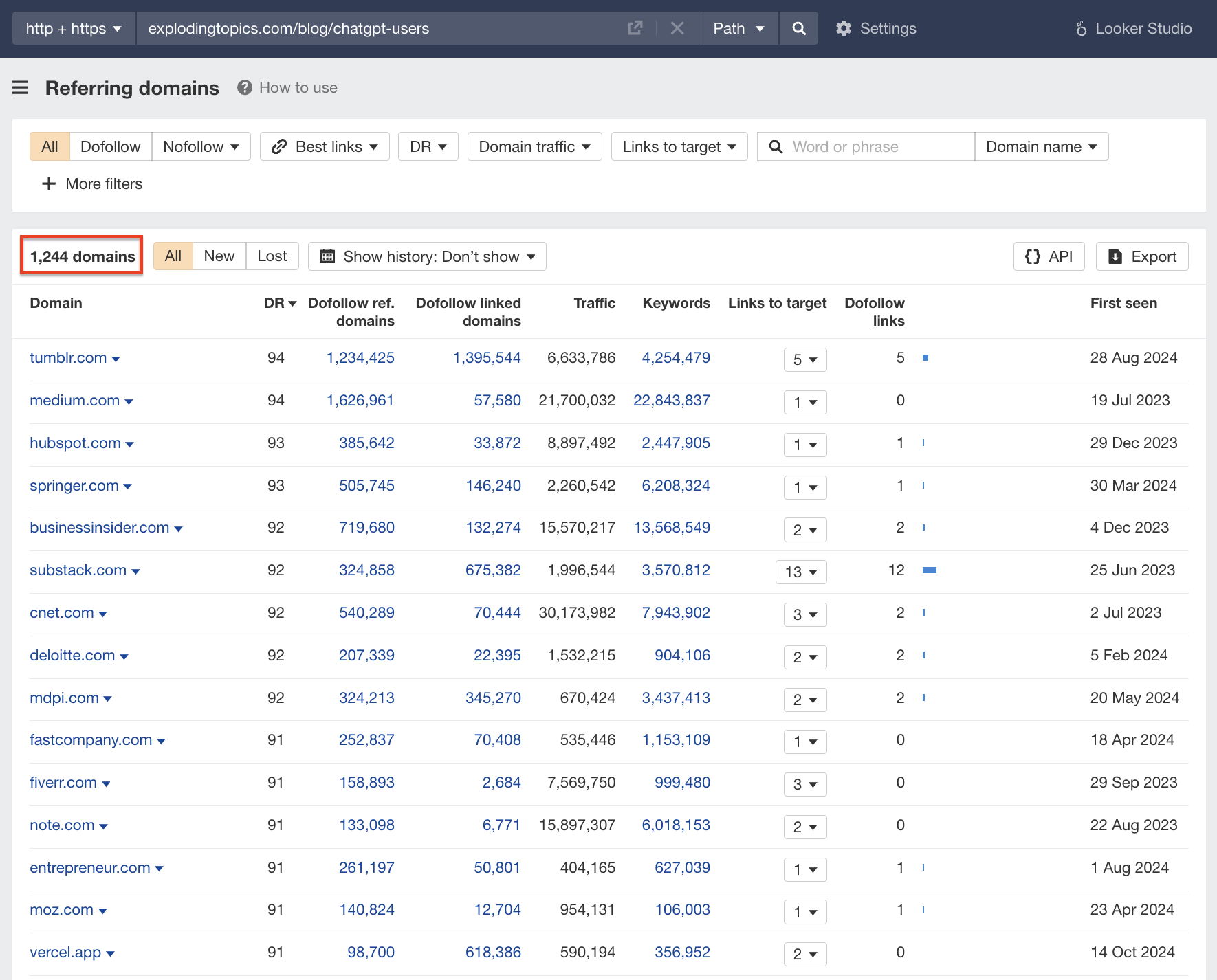
Of course, this is an extreme example. You don’t need to create 225 pages of content. And you’re not Brian Dean who is basically a god in the SEO world with unreal connections.
But it shows what’s possible with the right strategic approach.
For Exploding topics, doubling down on stats, trends and usage content makes sense.
Why? Because their tool is all about helping people forecast trends and surface rapidly growing topics before they take off!
5. Niche Communities and Quora and Reddit
User-generated content (UGC) and online communities have exploded in popularity over the last few years. And search engines like Google have noticed.
We’ve observed incredible growth with hundreds of forum and community websites thanks to Google algorithm updates.
Reddit has enjoyed the lion’s share of this growth thanks to an exclusive partnership with Google. Their monthly visitors have subsequently exploded with this increase in visibility. Going from 75 million in April 2023 to 723 million in November 2024.
But what many haven’t noticed is that Reddit is just the start.
Other examples include (same time period as above):
- Quora – 57M to 144M
- Spiceworks – 160K to 2.4M
- What to expect – 80K to 1.5M
- Money Saving Expert – 170K to 789K
- Fodor’s Travel Community – 113K to 661K
- Bogleheads – 38K to 621K
- Shopify Community – 123K to 545K
- Squarespace Community – 3.8K to 52K
This is only the tip of the iceberg. You have hundreds more sites just like this.
Most people haven’t realised the gargantuan opportunity that now exists thanks to the growth in UGC visibility.
Not only for backlinks but for creating threads that rank in Google and recommend your products and services.
85 percent of people say UGC is more influential than content made by brands directly, according to Adweek
The goal is to create and share high-value, problem-solving resources in the places your audience already hangs out. This isn’t about spamming links like the old forum ways; it’s about showing up consistently, contributing meaningfully, and being the first to solve a problem when someone asks.
The challenge?
The time commitment and complexity of contributing to some of the best (highly moderated) UGC sites in the world AND placing your links is way beyond most SaaS company teams.
That’s why we spent 18 months building a bulletproof system for accessing the top communities in the world with Herd Links, our service where you can buy forum backlinks.
From account warmups to creating threads and placing links that don’t get deleted.
It’s a combination of art and science.
Example:
Let’s start with the mother of all community sites – Reddit. A domain that needs no introduction and whether you like it or loathe it, one that is here to stay.
On Reddit, we place comments on relevant threads, create threads, place links and brand mentions. Below is an example of a link we placed to a social media management SaaS, promoting an important article in their marketing agency cluster:

Notice how we linked from that generic anchor text? We’re strategic with the way we do this, often incorporating target keyword in other parts of the copy. Other times, we’ll be more obvious with keyword rich anchors, when feasible.
Next, we’ve got another community site with the following metrics:
Domain Rating: 59
Monthly visitors: 399,000
Traffic share: 96.1% USA
These visitors are all coming from threads ranking in Google from this site.
Here’s a recent comment we placed with a client link:

Notice that our comment not only adds value to the conversation but also strategically places the link in a non-obvious way. It’s conversational. It’s helpful. It’s made with an aged account we created in 2021 with hundreds of historical messages.
These types of links are often neglected in modern SEO, and this is a mistake.
Think about it. If your brand is blowing up, wouldn’t it make sense that people would start talking about it in different corners of the web? Especially in trusted, highly moderated, authoritative community websites.
And doesn’t it make sense that Google would look at these brand mentions and links as part of their ranking systems?
Herd Links creates the effect of people talking about your brand on the internet.
Of course, you can also do it yourself by contributing to places like Reddit and Quora with branded or personal accounts. Although this doesn’t cover anywhere near the same level of scale and third-party credibility that can be achieved through our service.
6. Testimonials for Software & Services
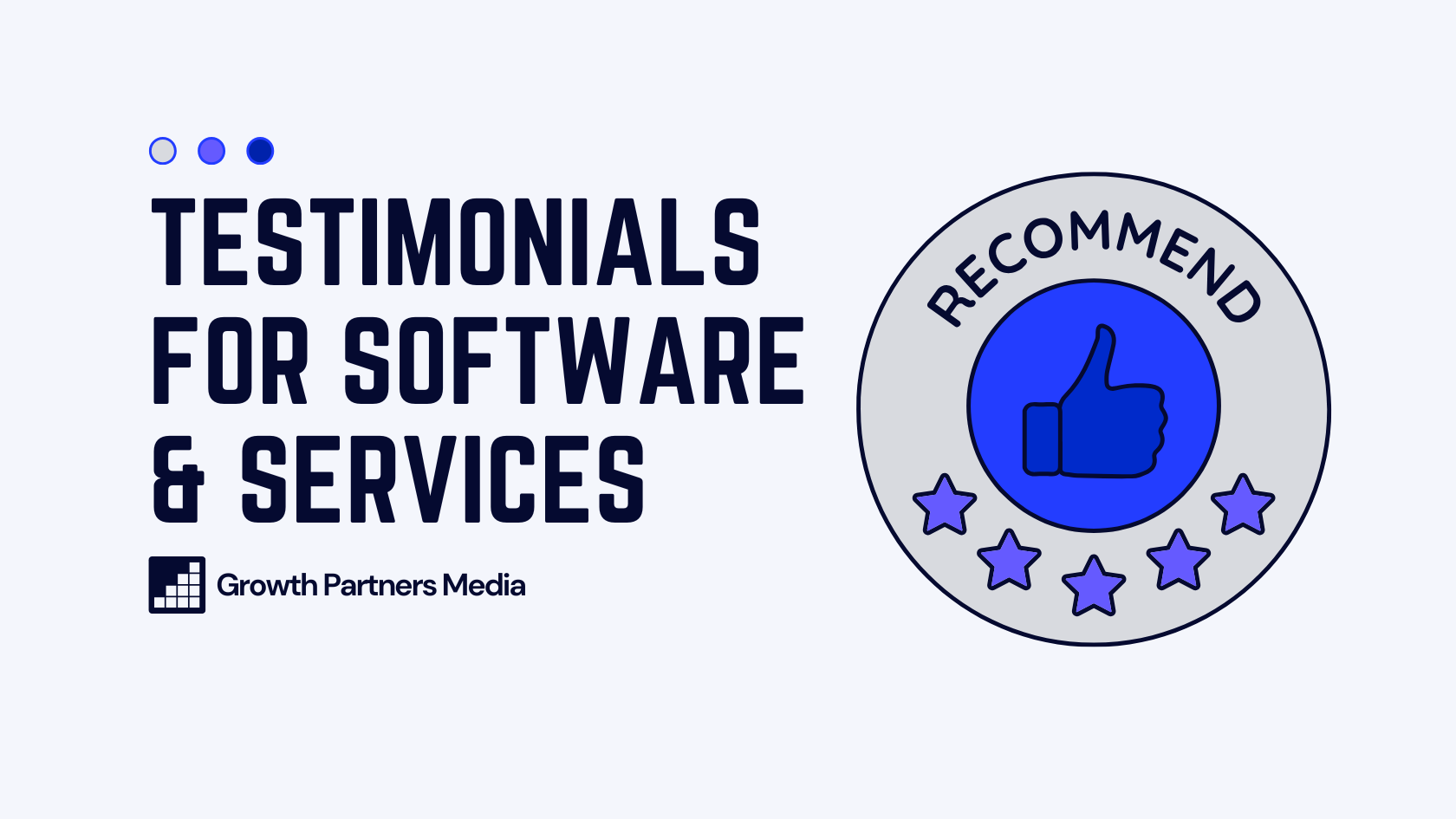
This one is so simple, you might overlook it.
Make a list of the tools and services you use and love at your business.
Write testimonials for these tools and services you already use. Then, politely request that they include a link back to your site.
It’s a win-win:
They get glowing praise; you get a backlink.
I’ve personally used this strategy, though it was without the explicit intention of landing backlinks at the time!
Many SaaS providers prominently display testimonials on their websites, often with a backlink to the client’s website. They’re showcasing proof that their product works—and you’re benefiting from the exposure and link equity.
It’s especially effective when the service you’re endorsing aligns with your own brand or audience. For example, if you’re in SaaS and you rave about your project management tool, that’s an authentic connection others will respect.
What’s more, testimonial links are often found on the homepage. The homepage is usually the most powerful page from an SEO perspective on any given website because it has the most links pointing to it.
So one of these links can be worth dozens of other contextual links.
7. Image links
They say a picture is worth a thousand words.
But when link building for saas, it’s also worth a thousand backlinks…
Just kidding!
If only you could get thousands of backlinks with a few images. In truth, Image links can be used to get a few extra backlinks.
Visual content grabs attention, simplifies complex ideas, and is highly shareable.
The idea is simple:
Create original, high-quality visuals that provide value to your audience—infographics, charts, or instructional images.
Then make them shareable, with one key stipulation: proper attribution. AKA – A sweet link back to your site.
When done right, these visuals will naturally get picked up by blogs, social media accounts, and even industry publications.
Example
Here’s an example of an image link from one of our guest posts:

8. Lifetime accounts
This one is a little bit cheeky.
I’ve personally been on the receiving end of this a handful of times. I still have some of these “partner” accounts to this day. One account I’ve had for over 6 years.
Lifetime accounts are all about offering your tool in exchange for links.
Pretty simple concept:
You reach out to sites that are attractive to you. You offer them a lifetime account for your tool in exchange for a link.
The downside to this approach is giving full access to your software for free to a lot of people, which can dilute perceived brand value.
It’s also not exactly white-hat and if Google found out about this practice, they wouldn’t be too happy.
9. Badges & Embeds
Want to turn your users into saas backlink builders?
Badges and embeds are a seamless way to make it happen.
This strategy enables users to embed a widget, badge, or snippet of your product directly onto their website. It’s like giving them a mini piece of your software to display—and it links back to you.:
Here’s how it works:
Create something embeddable—this could be a badge, form, or widget that adds value to the user’s site.
Provide them with a simple embed code that includes a “Powered by [Your Product]” link or hyperlinked image.
As users integrate these badges or widgets into their pages, they generate backlinks to your main domain.
Example
Harvard University uses Mailchimp for its email marketing. Mailchimp created a form to embed on your website to sign people up for your email list.
This is common practice among email marketing service providers.
But the clever part is they added a link to their privacy policy and terms of use pages on their form:

A huge reward for relatively low link building efforts.
Even though they’re linking to privacy policy and terms of use pages, the domain authority benefits are huge. Not to mention other trust signals that are sent when universities like Harvard link to your website.
Overall this strategy is a powerful method for building links from authoritative websites.
But the downside is the lack of targeting.
You cannot build links to specific pages you’re looking to target for ranking and traffic growth. That’s why this is best used as one of many link building tactics in your arsenal.
Essential SaaS Link Building Strategies
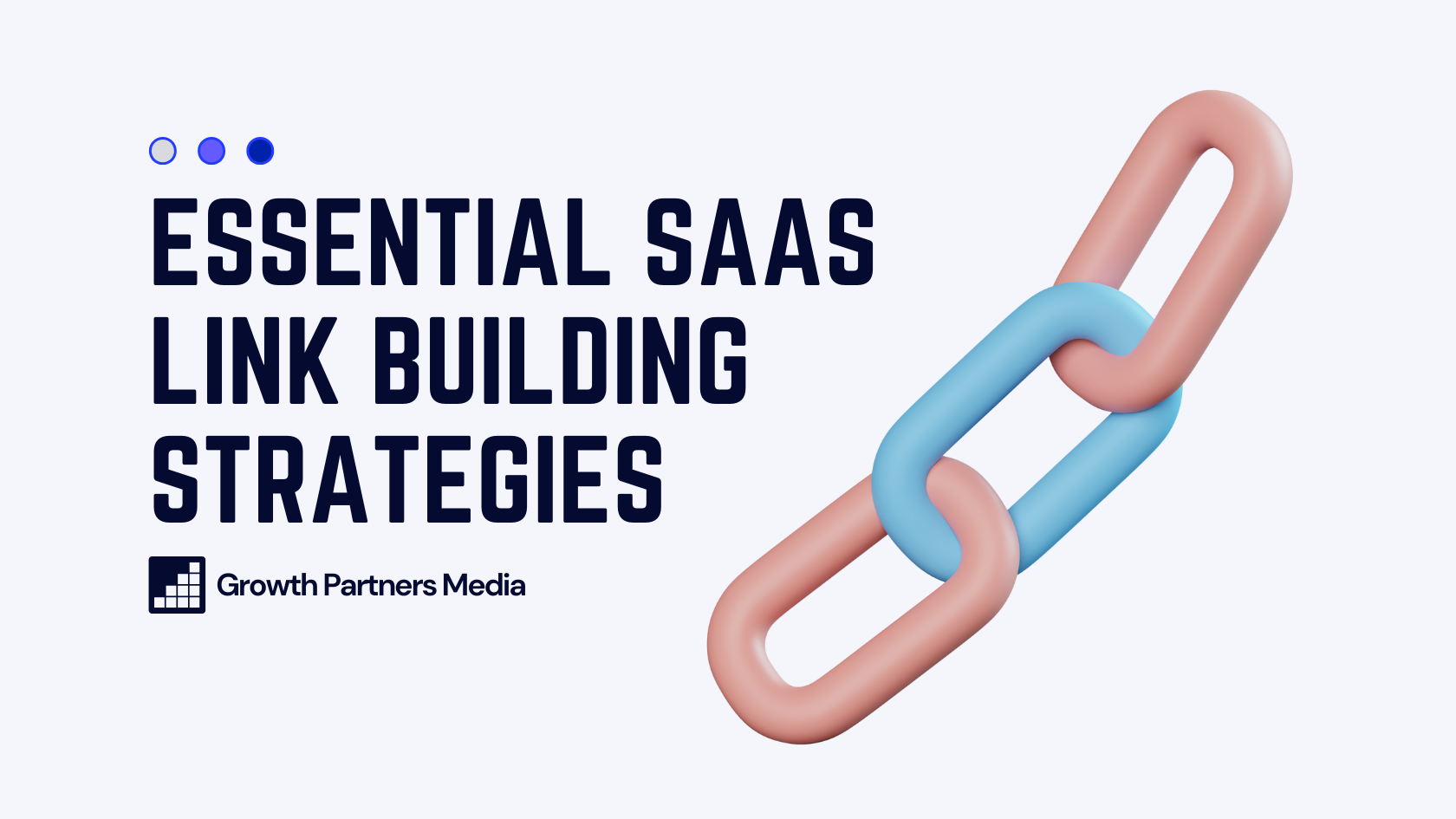
When it comes to SaaS link building, some strategies form the bedrock of success.
These are the tried-and-true methods that deliver results consistently, whether you’re just starting to build your backlink profile or looking to solidify your authority in the space.
But don’t let the term “essential” fool you.
These strategies aren’t basic—they’re fundamental to the SEO ROI of thousands of companies globally.
They combine simplicity with scalability, helping you earn high-quality links that move the needle for SEO and visibility.
In this section, we’ll dive into the tactics that every SaaS business should prioritize, showcasing how you can maximize your efforts and set your foundation for long-term success.
Let’s get started!
10. SaaS Directories & Review Sites

Building a strong backlink profile doesn’t always require intricate strategies or endless outreach.
Sometimes, it’s as straightforward as submitting your business to SaaS directories and review platforms.
These are solid foundational links and can get the ball rolling with minimal effort.
Some of these sites offer more than just high quality backlinks — they’re discovery engines where your potential customers are actively searching for tools like yours.
Platforms, like Capterra, G2, and Product Hunt, are designed to connect businesses with software solutions.
But you already knew about those!
What you may not know are the dozens of other sites where you can get free high quality links.
Submitting your SaaS to these platforms get you:
- High-authority backlinks – These sites often have strong domain ratings, passing valuable link juice to your site.
- Increased visibility – Many directories rank highly for SaaS-related keywords, giving your brand exposure to a wider audience.
Getting listed on most directories is simple:
- Create an account – Platforms like Capterra or G2 let you sign up, submit your business details, and provide a link to your website.
- Contribute value (if required) – Some platforms, like GitHub, may require you to contribute code to their ecosystem before earning a backlink. Others, like Product Hunt, focus on community engagement and upvotes to maximize visibility. But most simply require you to create a profile.
Want the full list of directories to submit your SaaS? I got you.
We did the grunt work and sifted through 97 websites. Quality checked them. And verified if you can still submit your link.
The result is a handy PDF guide of 31 SaaS-friendly sites to submit your business and get high quality backlinks, for free.
You can download it here.
11. Brand Features
Not to be confused with brand mentions, brand features focus on showcasing your brand in a positive light, in addition to landing a juicy backlink!
Often this involves being showcased on a listicle blog post of best X tools for [insert your niche].
These posts are a vital part of the customer research process. As people often search best x keywords once they are problem-aware to uncover suitable solutions.
Content is typically middle funnel and converts fairly well.
There are two approaches you can take to brand features:
- Creating the content yourself
- Getting featured in content that already ranks on page 1 in Google and actively receives traffic.
Both strategies are powerful. The second can offer immediate results but is harder to pull off.
The first option is more of a slow-burner and requires content planning, creation and promotion.
Example:
Here’s a brand feature we landed for a client on Ringover, in one of their best x posts:

12. Unlinked brand mentions
Since we just covered brand features, it would be rude not to mention SEO brand mentions next!

This is a staple strategy that can bring you a few backlinks on repeat – if you’re fairly established.
The concept is simple:
Anytime your brand is mentioned online without a backlink, you reach out to those sites and politely ask them to add your link.
It can be pretty hit and miss with outreach but you can certainly get a few links this way.
A significant contributing factor to the success of this approach is the quality of your outreach emails and of course – reaching out to the right people.
13. Guest posting
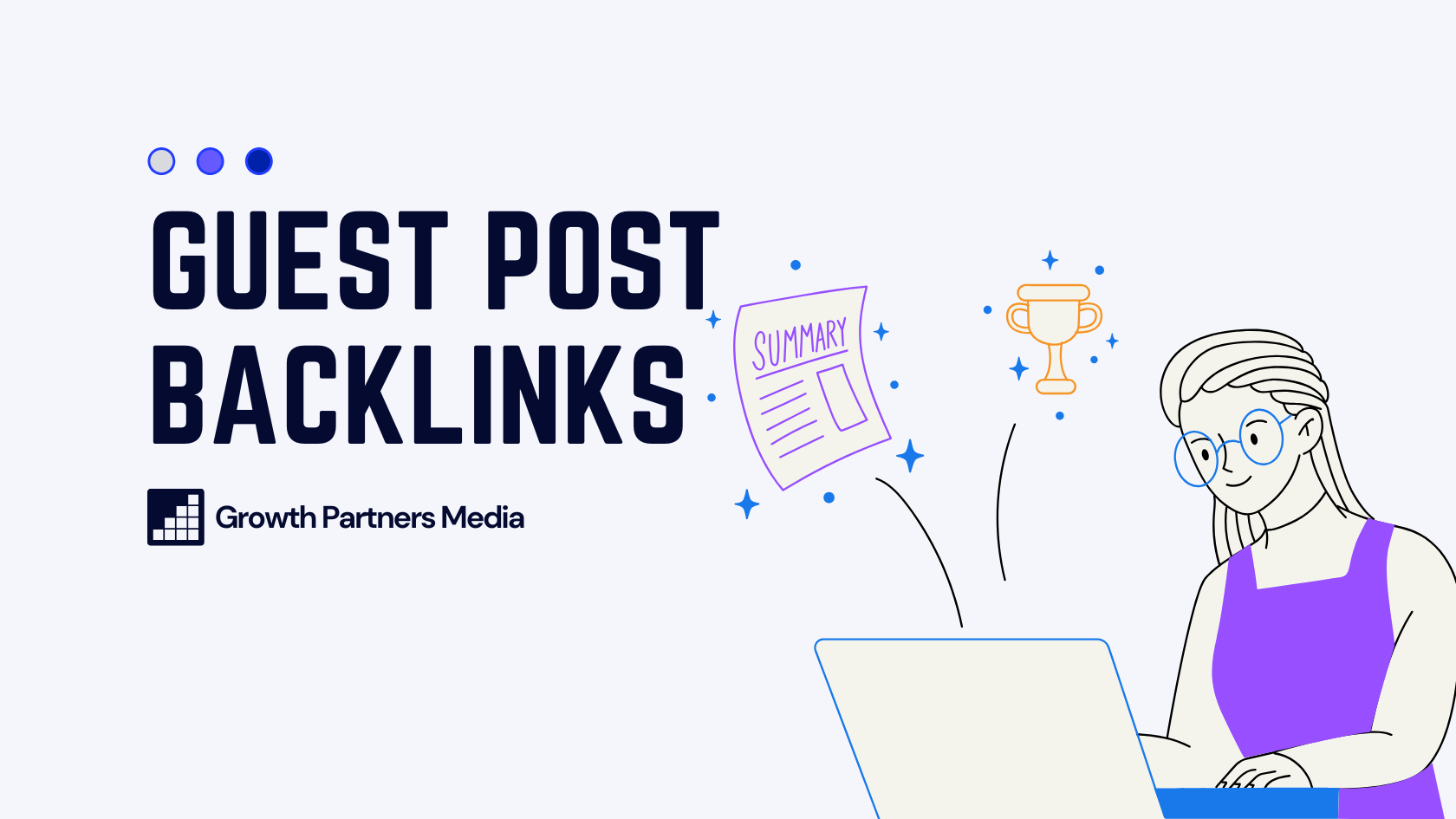
If you’re reading this article on link building for saas, you’ve probably heard of guest posting.
It remains one of the most powerful and scalable ways to acquire safe backlinks for your business from some of the best sites on the web (major caveat – if done correctly).
Not all guest posting is the same.
I get bombarded by so-called “guest posting providers” each and every day. And I ignore all of them.
I’m sure you’ve seen the type. The list of sites that they’re offering to publish your article for a fee.
These sites are worthless because many of them exist for the sole purpose of selling backlinks or guest posts. We call these “link farms”. And we’ve seen our fair share over the last years.
What’s more, many agencies are not even agencies. They’re resellers.
All they do is resell the links they buy from lists of sites they receive. These companies add no value to the backlinks you receive, aside from marking up the price.
Real guest posting focuses on creative outreach.
Here’s a rough primer on the process on our end:
- Source quality websites
- Push through 15-point qualification criteria
- Find correct email contacts and verify them
- Create original email sequence that stands out from the sea of boring
- Reach out and pitch suitable topics to replies
- Write out long-form guest post, add relevant client links (1,000 – 3,500 words)
- Push through editorial process
- Submit to publishing websites
- Update operational and reporting workflows (record links…etc)
I know – It’s quite an undertaking. That’s why guest posting is one of the most commonly outsourced link-building activities.
Landing guest posts is also a challenge in itself. This is something good agencies specialize in. They build partnerships with brands that allow them to publish content on sites others could merely dream about.
Example
Here’s an example of a guest post we wrote for Lead Gen App. I’ve handpicked this one to protect our author details, which we cannot reveal here. This example is ghostwritten.
Notice how the quality of our writing is better than most guest posts you’ve probably seen. Quality over quantity wins in this game.
By writing fewer guest posts and focusing on quality, we have the privilege of contributing to sites that are out of reach for the majority.
14. Outreach Links
Also known as blogger outreach, link inserts or niche edits.
To score an outreach link, you get someone to add your link to an article that already exists.
You could score an outeach link from a brand in your space, or in a relevant article from a .GOV or university website. We wrote a guide on how to get backlinks from gov sites and how to get backlinks from edu sites too.
Outreach links are another staple for SEO growth that companies use. These links grow domain authority, rankings and traffic for your website.
They’re scalable and contextual (embedded within content), which makes them one of the most powerful forms of link building for saas (and other industries too).
From the hundreds of prospects I’ve spoken to over the years, most have struggled with building outreach links effectively. It’s one of the top pain points.
That’s because it’s freaking hard.
There’s no two ways about it.
You need a PHD in email marketing just to reach inboxes these days – and that’s only a mild exaggeration!
Let alone craft copy that converts words to backlinks.
There are several tactics you can employ to score outreach links. We reserve our best ones exclusively for client campaigns.
15. 3-way link swaps
Not all link swaps are created equal.
Traditional link exchanges (Site A links to Site B, and vice versa) are often flagged by search engines as unnatural or manipulative.
That’s where 3-way link swaps come in—a smarter, stealthier way to build backlinks without raising red flags.
Instead of a direct link exchange, this method involves three parties:
- Site A links to Site B.
- Site B links to Site C.
- Site C links back to Site A.
This triangular exchange keeps the links non-reciprocal, making them appear more organic while still passing value between the sites.
The process typically involves three core steps:
- Find relevant partners.
- Pitch the swap.
- Coordinate the loop.
The problem is it gets very complicated once you start doing this at any level of scale. You need to be able to track all the partners, what you gave them, what they gave you. Status of the links. And coordinate all the moving parts.
That’s why we created a bespoke system for partnerships on Google Sheets at GPM. This system allows us to work seamlessly with more than 293 brands at the same time.
At this level of scale, the spreadsheet automations are pretty close to voodoo magic!

SaaS Backlinks We Don’t Recommend
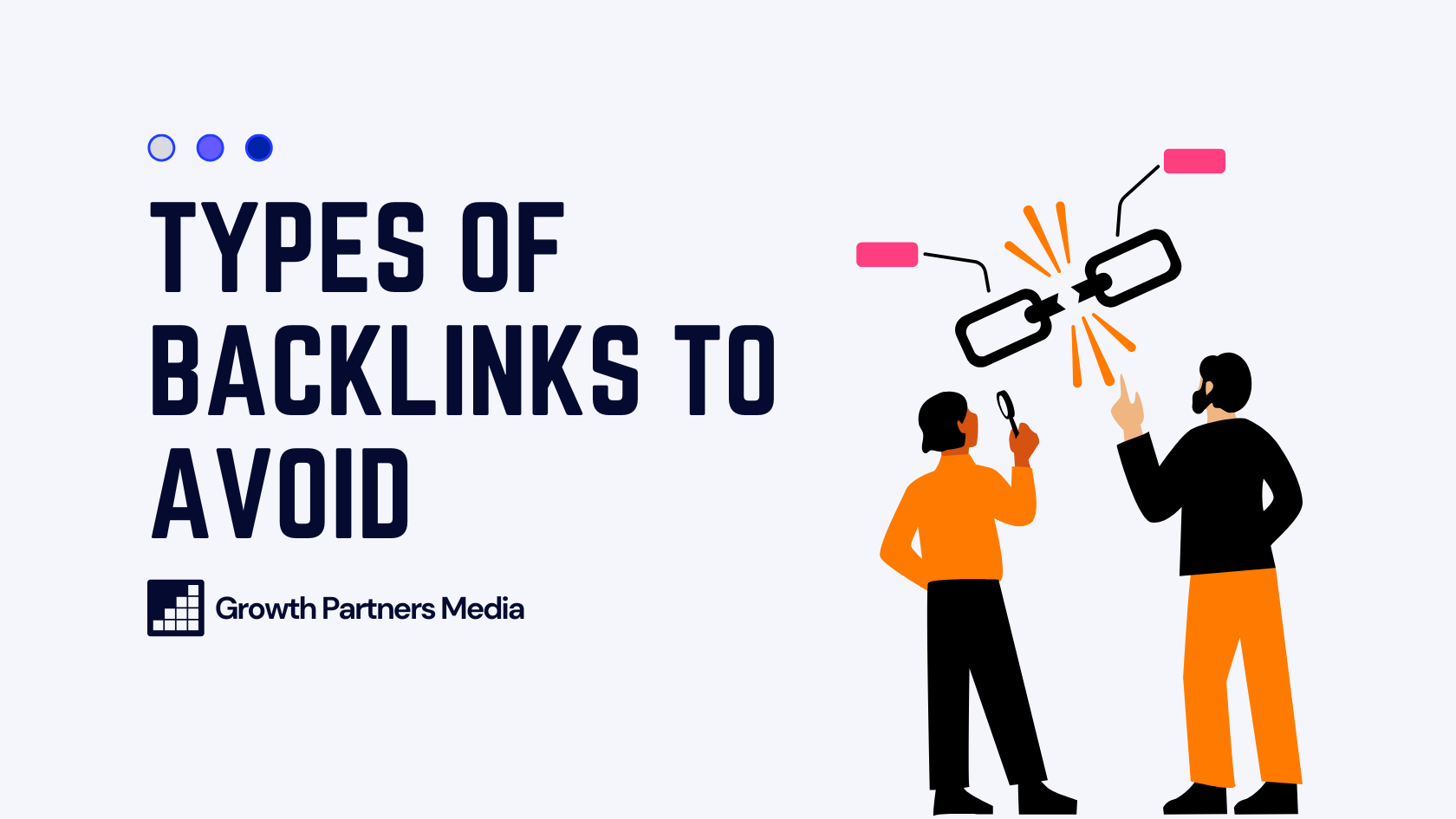
I’ve curated the list for this post based on my 8 years of experience in SEO, 4 of which have been running Growth Partners Media. Throughout these years, many link building strategies have come and gone.
One of the big problems I’ve noticed is too much focus on tactics over principles.
People obsess over the tactics and ignore the principles of what works.
So they copy the next big tactic they see on popular SEO blogs. The problem with this is everyone does the same thing, so the tactic stops working.
That’s why copying doesn’t get you far.
Over the years, I’ve learned that it’s all about understanding the principles. And using your creativity to put a unique spin on your link building campaign.
Building links in this day and age is more difficult than it has ever been.
That’s why it’s not only important to know what works – but also what to avoid.
The following link tactics are one that we do not recommend:
- Help a Reporter Out (HARO)
- Broken link building
- Infographic link building
- The Skyscraper Technique
- Podcasting for links
- Conferences for links
All these tactics match at least one of these criteria:
- Outdated and no longer effective.
- Not scalable.
- Too resource intensive or expensive.
There’s nothing inherently wrong with any of these approaches. It’s just that they no longer work well.
For example, HARO used to be excellent, but is now flooded with AI answers and has a much lower success rate. It is also being discontinued as of 9th December 2024. Permanently.
Broken link building and Skyscraper technique used to work wonders. But now everyone has received 500+ of these emails in their inbox and they ignore them.
What’s the best link building strategy for SaaS companies?
If you’ve reached this stage of the post, you’ve probably realised:
There’s no one-size-fits-all answer.
The best strategy depends on your product, audience, and resources.
That being said, one thing applies to all campaigns:
Link diversity.
Don’t rely on one or two tactics. Incorporate a varied approach into your link building strategy.
Why? Because this is what Google wants to see. It’s all about looking natural. If you focus only on one approach, it’s going to leave a footprint.
And footprints are bad news for search rankings and organic traffic.
Building backlinks for a SaaS company requires a mix of creativity, value-driven content, and authentic relationships. Whether it’s crafting interactive tools and promoting them with outreach links, or embedding “Powered by” badges, the strategies you choose should align with your brand’s goals and the resources at your disposal.
Start by focusing on high-impact tactics based on where you are in your journey.
A funded and established SaaS company with 100+ employees will have a very different approach to a bootstrapped founder-led business with less than 10 team members.
Most importantly? Stay consistent.
Please don’t hire an agency or start this internally if you cannot afford to invest in your SEO for at least 12 months.
Link building is a long game, but with persistence and a thoughtful approach, the results can transform your SaaS business.
If you want to outsource any part of this work, we are an option you may want to consider. You can check out more details on our homepage.
- How to Outsource Backlink Building Without Stress [2025] - October 7, 2025
- Top 3 SEO Outreach Services That Actually Work [2025] - October 7, 2025
- 9 White-Hat Link Building Techniques For AI & Google (2025) - September 23, 2025

